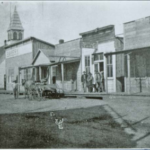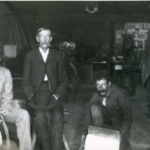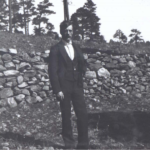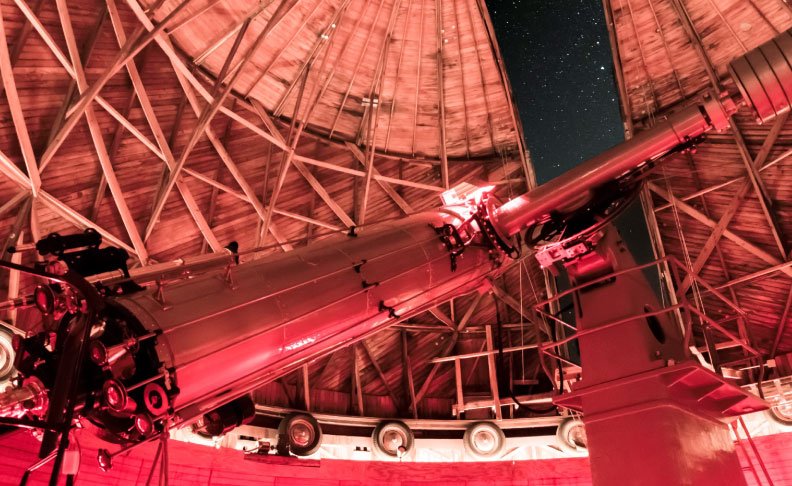
Photo: The 24″ Clark refractor (Credit: Raymond Dake Photography)
Of the many telescopes found on Lowell Observatory’s central Flagstaff campus, the most prolific and recognizable is the Clark Refractor. Nestled among ponderosa pines, the Clark Dome is the first thing you see as you embark on the winding road that leads up to Mars Hill. In the observatory’s earliest days, Percival Lowell himself used the Clark to study the surface of Mars, searching for signs of intelligent life. His theories on the subject fostered massive public interest in astronomy and sparked the imaginations of science fiction writers for generations to come. Nearly a century later, the Clark would be used by a team of scientists and artists to create painstakingly detailed maps of the Moon’s surface for use on the Apollo moon mission.
From Bicycles to Telescope Domes
In 1895, Percival Lowell commissioned Alvan Clark & Sons to build him a 24-inch refracting telescope for $20,000. Lowell hired Flagstaff local Godfrey Sykes, co-owner of the Sykes Brothers Bicycle Repair Shop, to construct a dome for the refractor. To task a bicycle repairman with the building of a telescope dome may seem unconventional, but Godfrey and his brother Stanley proclaimed to be “makers and menders of anything” on a sign posted outside of their shop. When Godfrey asked for further details on how Lowell wanted the dome to be constructed, Lowell reminded him that he and his brother Stanley claimed to be “competent makers of anything,” and, “that of course covered the case and settled the matter.”
- Sykes Brothers’ shop exterior.
- The interior of the Sykes Brothers’ shop.
- From left: Lowell staff member Andrew Douglass, Godfrey Sykes, David Babbitt, and an unknown repair shop staff member.
- Stanley Sykes.
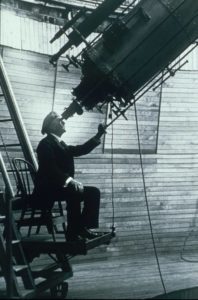
Percival Lowell, observing the cosmos through the Clark.
The Clark Dome has undergone many renovations and updates since its original construction, but it maintains an appearance very similar to the one it had during Lowell’s time. When it was first constructed, the dome rotated on a set of metal wheels that rolled along a track. For several years during the turn of the 20th century, Lowell staff experimented with rotating the dome on a system of pontoons floating in saltwater. The water would often leak down the interior walls, leaving behind stains on the wood that are still visible today. As the saltwater method proved ineffective (and messy), the metal wheels were put back into use. Finally, in 1960, the metal wheels were replaced with Ford automobile tires. This method is still in effect today, using the same model of tires.
A Modern Legacy
The Clark Telescope and the dome that houses it have claimed many notable places in modern pop culture. In season 1 of the popular nerd-core sitcom The Big Bang Theory, a poster featuring the Clark can be seen hanging in the bedroom of Sheldon and Leonard, two of the show’s main characters. The telescope itself has been visited by many notable figures over the years, including poet Carl Sandberg, then First Lady Hillary Clinton, western adventure writer Zane Grey, and astronomy popularizer Neil DeGrasse Tyson.
The newest chapter in the Clark Telescope’s legacy began with the announcement of a new private stargazing experience: Clark Telescope Premium Access. This experience allows groups of up to 10 cohabitating or cotraveling guests to view the cosmos through Mars Hills most storied telescope. Tickets are available now, so don’t wait—reserve your place in the Clark’s history today!
